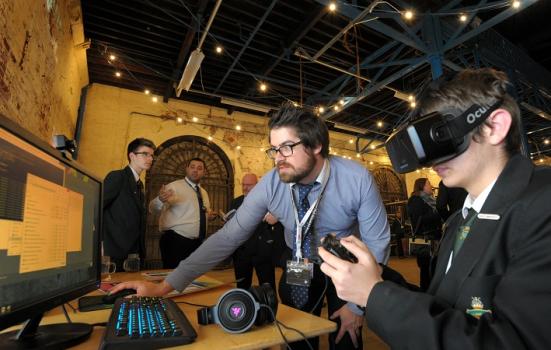The £125m tax break will take effect from April 2017, and joins an additional £10m earmarked for culture and heritage projects.

John Allen
More museums and galleries are set to benefit from a tax relief worth £125m over the next five years, after the Government widened its new scheme to include permanent exhibitions. The move was announced by Chancellor Phillip Hammond in his autumn statement yesterday.
The tax relief, due to take effect for an initial five years from April 2017, will be capped at £500k of qualifying expenditure per exhibition and set at 25% for touring exhibitions and 20% for non-touring exhibitions. The Treasury anticipates this will cost the Government £5m in 2017-18, and £30m every year from then until 2021-22.
The Museums Association (MA) welcomed the news: “We were concerned that the original proposal for tax relief on temporary exhibitions would only benefit the type of exhibition that the national and larger regional museums can put on,” said Alistair Brown, MA’s Policy Officer.
“We’ve held regular meetings with the Treasury and with other sector bodies over the autumn to argue the case for a more equitable scheme, and we are delighted with this outcome.”
Financial commitments
The Chancellor also committed £10m to culture and heritage projects across the UK, with £7.6m earmarked for country house Wentworth Woodhouse for “urgent repairs”.
In addition, £1.6m will go to Southampton’s new Studio 144 arts complex, which will become home to Nuffield Theatre. The £28.5m project faced criticism last year after local councillors considered selling items from the city’s arts collection in order to complete the project.
£850k has been allocated to the RSA (Royal Society of Arts) and the Education Endowment Foundation to measure the impact of cultural education interventions on the performance of Pupil Premium-eligible school children. The intention is to launch the programme in early 2018.
Speaking about the award, Julian Astle, the RSA’s Education Director, said: “The Chancellor’s announcement today significantly boosts the prospects of raising the additional funding needed to move ahead swiftly with our plans to run a series of randomised control trials (RCTs) across some 200 schools over the next two years – a set of trials that will inform schools’ spending decisions and improve the effectiveness of arts and cultural organisations’ educational provision.”
The Chancellor also committed £1m to support the creation of a new creative media centre in Plymouth’s Devonport Market Hall. The Chancellor’s grant takes the project to £4m of its required £5m.
Local government
Although the Chancellor announced increased borrowing powers for some local authorities and funding for local economic partnerships (LEPs), concerns remain about the challenges facing local arts services, particularly in the wake of estimates that local authority arts spending is set to fall by 13% this year.
“The next few years will be extremely challenging for councils who we estimate face an overall £5.8bn funding gap by 2020,” the Local Government Association said. “Even if councils stopped filling in potholes, maintaining parks and open spaces, closed all children’s centres, libraries, museums, leisure centres, turned off every street light and shut all discretionary bus routes they will not have saved enough money to plug this gap by the end of the decade.”
John Kampfner, Chief Executive of the Creative Industries Federation, added: “We recognise that this is a sober and cautious autumn statement from the Chancellor in the face of great uncertainty and worrying economic figures.
“The creative sector is well placed to help drive growth across the entire country and so we see huge potential in the £1.8bn funding awarded to local authorities and local enterprise partnerships. Investment in the creative industries has been key to the Northern Powerhouse development and other forward-thinking LEPs have identified this as an area for growth. We look forward to seeing how these new funds will develop further opportunities.”
The Chancellor announced this would be the final autumn statement, with the budget moving to the autumn and the spring budget being replaced by a spring statement.




